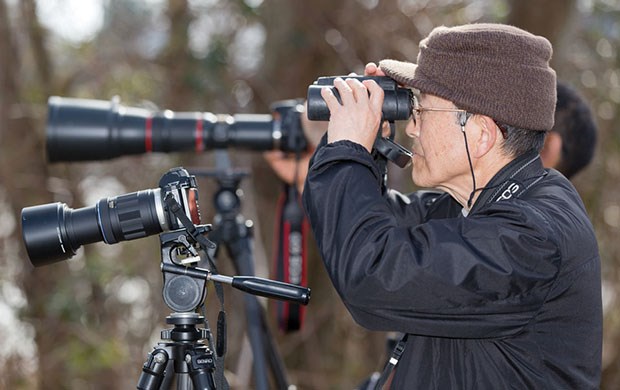Today was a beautiful sunny morning, so I cycled the Brunswick Point dike at the mouth of the Fraser. There had been reports of rare white pelicans there on the local birdwatching listserve, so I thought I would try my luck. According to a newly published survey from biodivcanada.ca, I am among 89 per cent of Canadian adults who regularly choose nature-based recreational activities.
Whether it is picnicking and relaxing (71 per cent), reading or viewing nature media (66 per cent), or pottering in the garden (51 per cent), the 2012 Canadian Nature Survey found that nature-based activities are important for the majority of our country's adult population.
Canada is a tremendous country for outdoor recreation and we can choose among a myriad possibilities, whether gardening, camping or going for a hike, or more adventurous pursuits such as rock-climbing, skiing or caving. A majority of people pursue so-called non-consumptive pursuits, such as photography, birdwatching or simply taking a walk with the dog, while some engage in consumptive hunting, trapping, fishing or motorized recreation.
Even those who cannot get into the wild often watch nature videos or go to an aquarium. Those, like me, who enjoy watching, feeding or photographing birds spend an average of 133 days a year on their pastime, more than for any other single activity. Yes, us birders are obsessive! It is not all selfish pleasure. Thirteen per cent of Canadian adults undertook volunteer conservation activities, with rural and Aboriginal Canadians and those engaged in nature professions being particularly active.
The vast majority of our nature-loving population is well aware of the terms - biodiversity, ecological services and species at risk - and understands their meaning. Consequently, it is no surprise that 45 per cent of respondents had adjusted their lifestyle to reduce their ecological footprint.
Canadians were also generous with their money: $874 million was contributed by individuals to nature and conservation groups. Nature-related activities are a strong driver of the economy: Canadians spent an estimated $40.4 billion in the survey year, the majority of it on non-motorized, non-consumptive pursuits.
Nature also plays a role in where Canadians live. In B.C., 68 per cent of residents chose locations due to their access to nature, a result municipalities should note.
My cycle at Brunswick Point produced views of the farmland, the sound of singing marsh wrens and yellowthroats, a spotted sandpiper guarding its nest and an eastern kingbird hawking flies, but the pelicans had left with the outgoing tide, headed northwards.
Anne Murray is an independent writer, naturalist and author of two books on the natural history of Boundary Bay: A Nature Guide to Boundary Bay and Tracing Our Past ~ A Heritage Guide to Boundary Bay, www.natureguidesbc.com. She blogs at www.natureguidesbc.wordpress.com.



